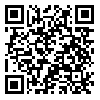1. WHO. Global health risks: mortality and burden of disease attributable to selected major risks: World Health Organization. 2009.
2. WHO. Global recommendations on physical activity for health. 2010.
3. USDHHS. Preventing Chronic Diseases:Investing Wisely in Health Preventing Obesity and Chronic Diseases Through Good Nutrition and Physical Activity. 2008.
4. Sheikholeslam R, Mohamad A, Mohammad K, Vaseghi S. Non communicable disease risk factors in Iran. Asia Pacific journal of clinical nutrition. 2004;13 pS100-S100. 1/2p.
5. Spencer L, Adams TB, Malone S, Roy L, Yost E. Applying the transtheoretical model to exercise: a systematic and comprehensive review of the literature. Health Promotion Practice. 2006;7(4):428-43. [
DOI:10.1177/1524839905278900]
6. Kim Y-H. Application of the transtheoretical model to identify psychological constructs influencing exercise behavior: a questionnaire survey. International Journal of Nursing Studies. 2007;44(6):936-44. [
DOI:10.1016/j.ijnurstu.2006.03.008]
7. Prochaska J, Norcross J. Systems of psychotherapy: A transtheoretical analysis: Cengage Learning; 2013.
8. Hayden JA. Introduction to health behavior theory: Jones & Bartlett Publishers. 2013.
9. Marcus BH, Selby VC, Niaura RS, Rossi JS. Self-efficacy and the stages of exercise behavior change. Research Quarterly for Exercise and sport. 1992;63(1):60-6. [
DOI:10.1080/02701367.1992.10607557]
10. Norman G, Benisovich S, Nigg C, Rossi J,. Examining three exercise staging algorithms in two samples. 19th annual meeting of the Society of Behavioral Medicine. 1998.
11. Nigg C, Rossi J, Norman G, Benisovich S. Structure of decisional balance for exercise adoption. Annals of Behavioral Medicine. 1998;20:S211.
12. Charkazi A, Nazari N, Samimi A, Koochaki GM, Badeleh MT, Shahnazi H, et al. The relationship between regular physical activity and the stages of change and decisional balance among Golestan University of Medical Sciences. Research Development in Nursing and Midwifery. 2013;9(3):74-81. ]Persian[.
13. Opdenacker J, De Bourdeaudhuij I, Auweele YV, Boen F. Psychosocial mediators of a lifestyle physical activity intervention in women. Psychology of Sport and Exercise. 2009;10(6):595-601. [
DOI:10.1016/j.psychsport.2009.03.002]
14. Karimzadeh Shirazi K, Niknami SH, Heydarnia A,Vallas LM,Turkeman G,Faghihzadeh S. Effects of a TTM-based osteoporosis preventive physical activity education, on increasing muscle strenghts and balance in women aged 40-65. Hakim Health Systems Research Journal. 2007;10(2):34-42. ]Persian[.
15. Mahmoodabab SSM, Mohammadi M, Abad MAMS. Application of Transtheoretical Model to Exercise in Office Staff. Electronic Physician. 2013;(1): 588–593.
16. Dumith SC, Gigante DP, Domingues MR. Stages of change for physical activity in adults from Southern Brazil: a population-based survey. International Journal of Behavioral Nutrition and Physical Activity. 2007;4(1):25. [
DOI:10.1186/1479-5868-4-25]
17. Marshall SJ, Biddle SJ. The transtheoretical model of behavior change: a meta-analysis of applications to physical activity and exercise. Annals of Behavioral Medicine. 2001;23(4):229-46. [
DOI:10.1207/S15324796ABM2304_2]
18. Callaghan P, Khalil E, Morres I. A prospective evaluation of the Transtheoretical Model of Change applied to exercise in young people. International Journal of Nursing Studies. 2010;47(1):3-12. [
DOI:10.1016/j.ijnurstu.2009.06.013]
19. Sutton S. Stage theories of health behaviour. Predicting health behaviour: Research and practice with social cognition models. 2005;2:223-75.
20. Charkazi A, Fazli L, Alizadeh F, Fazelnia A, Bakhsha F. Regular Physical activity Based on transtheoretical Model among Health and Paramedic Schools of Golestan University of Medical Sciences. Iranian Journal of Health Education and Health Promotion. 2014;1(4):57-68. ]Persian.[
21. Emdadi S, Nilsaze M, Hosseini B, Sohrabi F. Application of the Trans-Theoretical Model (TTM) to exercise behavior among female college students. Journal of Research in Health Sciences. 2007;7(2):25-30.
22. Rejali M, Mostajeran M. Assessment of physical activity in medical and public health students. Journal of Education and Health Promotion. 2013;2. [
DOI:10.4103/2277-9531.112690]
23. Larijani B.An overview of osteoporosis in Iran. 1st International Osteoporosis Seminar in Iran Teheran, Iran; 2004. ]Persian[.


 , Mahboubeh Daneshnia
, Mahboubeh Daneshnia 
 , Kamal Mirkarimi
, Kamal Mirkarimi 

 , Bagher Pahlevanzadeh
, Bagher Pahlevanzadeh 
 , Elias Bahador
, Elias Bahador 
 , Hajar Dehghan
, Hajar Dehghan 
 , Ghorban Mohammad Kouchaki
, Ghorban Mohammad Kouchaki 

 , Aman Goli Rahimi
, Aman Goli Rahimi 




